Delve into the numerous benefits of using mulch, and learn the step-by-step instructions on how to apply it to your garden projects. Then when you are ready to get mulch, discover where to buy mulch supplies, and how to get mulch delivered right to your doorstep. Additionally, we’ll explore the estimated cost of purchasing mulch in Newcastle and surrounds, and discuss the various types available to suit your specific garden and landscaping projects.
The term "mulch" refers to any material (organic or inorganic) placed on top of soil to preserve moisture, suppress weeds, and improve the aesthetic appearance of planting beds. Common mulch materials include woodchip, pine barks, straw, and even stones and gravel.
Compost and mulch serve different purposes in gardening and landscaping, though they are often used interchangeably. Compost is a nutrient-rich organic matter that is applied to soil to help improve its structure and fertility. Mulch is a protective layer placed on top of soil to retain moisture, prevent weeds, and regulate soil temperatures.
However more recently many studies have shown that compost can also be used as a mulch, and in fact studies suggest its better than woodchips and pine barks. Generally speaking however, mulch should be layered on top of compost
Compost is created when organic materials like leaves, grass clippings, food scraps or manure break down over time through a controlled decomposition process known as composting. This process generates a dark, crumbly material high in nutrients that benefit plant growth. Compost is dug or tilled directly into soil to improve texture and provide a boost of minerals and organic matter.
Mulch is simply a protective covering placed on top of soil, not incorporated within it. A wide variety of organic and inorganic materials can be used as mulch, including wood chips, bark, gravel, stones, straw or leaves. Mulch serves to moderate soil temperatures, suppress weeds, retain moisture, and reduce erosion. It also improves the appearance of garden beds and landscaping. Unlike compost, mulch is not intended to act as a soil amendment and does not improve soil structure or fertility over time.
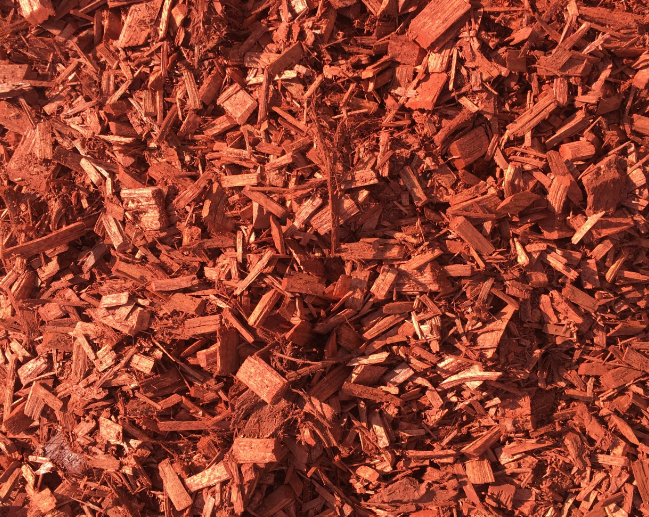
Red dyed woodchip mulch is a common type of landscape mulch made from shredded or chipped wood that has been dyed red. The red color is achieved either through a dye that is mixed into the woodchips or by spraying the chips with dye after they are produced.
Red dyed mulch is popular for several reasons:
The deep red color stands out and provides a vibrant, eye-catching look in the landscape.
Red mulch coordinates well with many plant color palettes, including those featuring purple, pink and orange tones.
The color tends to mask weeds and debris that inevitably make their way into mulched areas, providing a more uniform appearance.
Red mulch is often made from recycled wood waste materials, making it a sustainable choice.
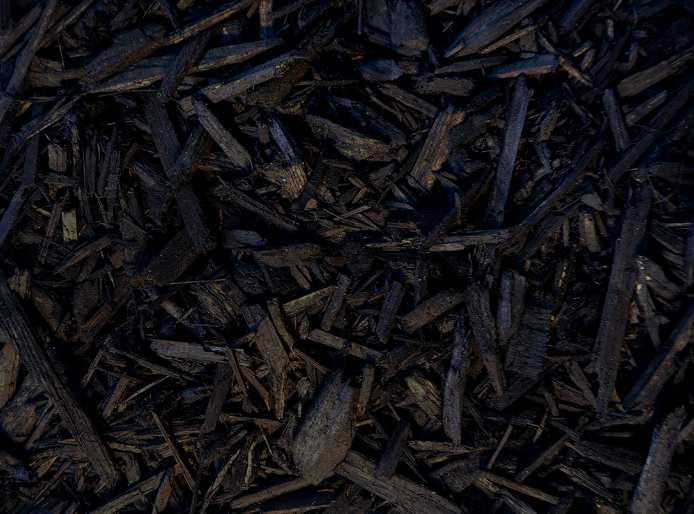
Black dyed woodchip mulch is another popular option for those seeking a dramatic landscape design. Like red dyed mulch, black mulch is made from shredded or chipped wood that has been dyed using a black dye.
Black mulch offers the following benefits:
The black color creates high visual contrast when used around green plants and light-colored hardscapes. It can make a powerful stylistic statement.
Black mulch helps to hide weeds and debris more effectively than lighter colored mulches.
The dark color absorbs heat, helping to warm the soil and air around plants in cooler seasons. This can be beneficial for cold-sensitive plants.
Black mulch is a sustainable option made from recycled wood materials.

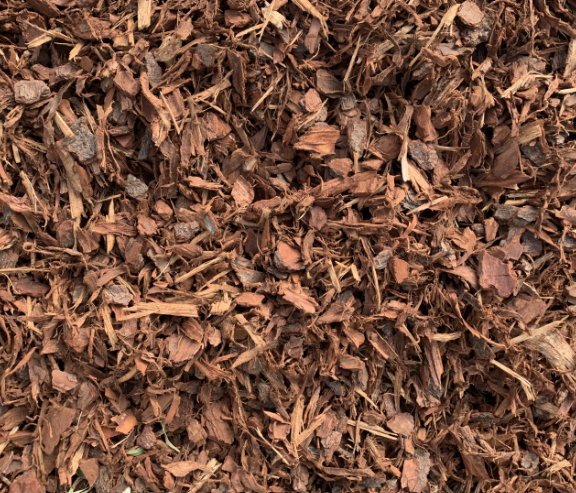
Pine bark mulch is made from the bark of pine trees, specifically from loblolly pine, slash pine and shortleaf pine trees. After the logs from these pine trees are harvested, the outer bark is removed using a debarking machine. The bark strips are then ground up into smaller particles ranging in size from about 20mm to 30mm for 25mm pine bark mulch.
The ground pine bark particles are screened to ensure consistency in size and remove any fines or oversized pieces. The particles are then dyed different colors and distributed to retailers and landscaping companies.
Pine bark mulch is a popular landscaping material used as a top dressing in gardens and around trees, shrubs and flower beds.
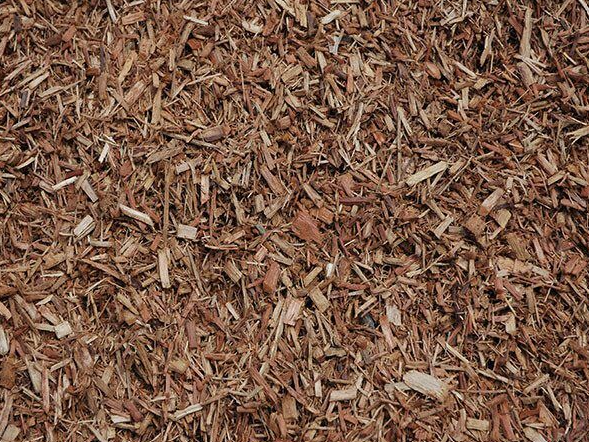
Eucalyptus mulch is a type of bark mulch made from the wood and bark of eucalyptus trees. The bark and limbs of eucalyptus trees are harvested and processed into mulch.
Eucalyptus mulch has several qualities that make it popular for use in gardens and landscaping. These include:
Attractive appearance: Eucalyptus mulch has a reddish-brown color and fibrous texture that some people find visually appealing in the garden.
Weed suppression: Chemicals in eucalyptus mulch can inhibit the growth of weeds, reducing the need for herbicides in the landscape.
Moisture retention: Eucalyptus mulch helps retain moisture in the soil, reducing the need for frequent watering.
However, eucalyptus mulch also has some drawbacks.

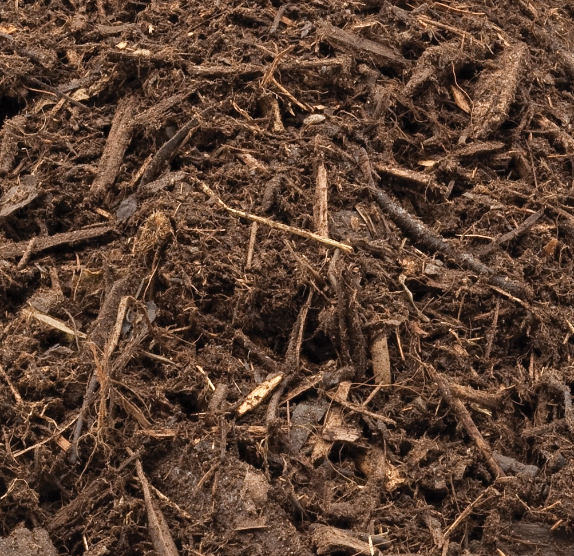
Forest mulch in Australia is organic mulch made from shredded or chipped tree branches and leaves. It provides numerous benefits when used in gardens and landscaping. The wood waste typically consists of tree limbs, branches, bark, and leaves that are collected from forest thinning, pruning, and clearing activities.
It provides numerous benefits when used in gardens and landscaping:
• Moisture retention: Forest mulch helps the soil retain moisture by reducing evaporation.
• Weed suppression: A layer of forest mulch smothers weeds, preventing them from sprouting.
• Temperature regulation: Forest mulch helps moderate soil temperatures.
Forest mulch is also one of the cheapest mulches you can buy and its readily available
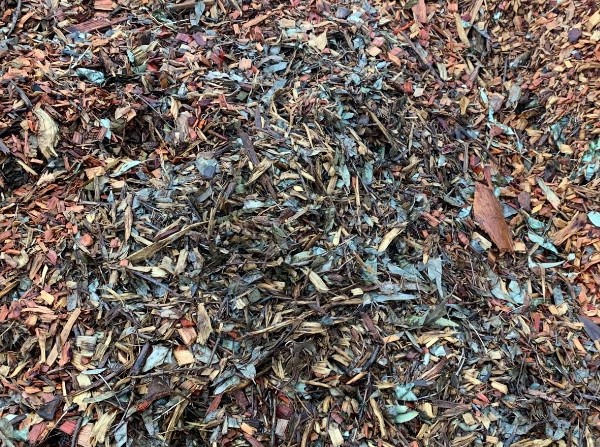
Leaf mulch refers to shredded leaves that are used as a garden mulch. Leaf mulch provides numerous benefits to soil and plants when used properly.
Leaf mulch tends to be a mixture of leaves and woodchips.
Leaf mulch helps retain soil moisture by reducing evaporation. The leaf material acts as a barrier between the soil surface and the atmosphere, slowing down moisture loss from the soil. This can be particularly beneficial during hot and dry periods for plants.
Leaf mulch also improves soil structure and aeration. As leaves break down, they increase soil organic matter which helps aggregate soil particles. This creates more pore spaces in the soil, allowing for improved gas exchange and root penetration.

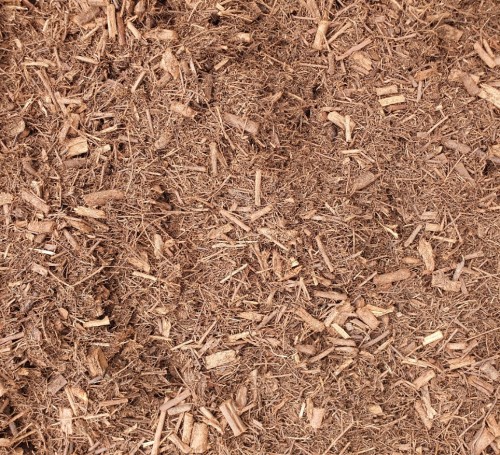
Tea tree mulch is commonly used as a natural weed killer and soil conditioner in Australian gardens. It is made from the leaves and twigs of the Melaleuca alternifolia plant, commonly known as the tea tree plant.
Tea tree mulch has natural fungicidal, insecticidal and germicidal properties that help control weeds and pests in the garden. The phenols and terpenes in the mulch suppress the growth of weed seeds and seedlings. Tea tree mulch also helps enrich the soil as it slowly breaks down, improving soil texture, aeration and moisture retention.
Tea tree mulch works best when it is regularly topped up and replenished to maintain its weed suppressing and soil conditioning benefits.

Cow manure and poultry manure are two common types of manure used in landscaping.
Cow manure comes from cattle farms. It is high in nutrients like nitrogen, phosphorus and potassium which plants need to grow. When composted, cow manure creates a rich, dark soil amendment that improves soil structure and aeration. It also helps retain moisture in the soil. Cow manure tends to be lower in salts and has a milder smell compared to poultry manure.
Poultry manure comes from chicken farms and is also high in plant nutrients. However, it tends to have a higher concentration of nitrogen and phosphorus compared to cow manure. This means poultry manure can “burn” plants if applied directly without composting first. Poultry manure also has a stronger odor and higher salt content which can damage plants and lawns in large quantities.
Both cow and poultry manure need to be fully composted before use in landscaping. This reduces pathogens, odor and salts to safe levels. When applying composted manure to soil, start with a small amount and work up gradually based on your plants’ needs. Adding manure in moderation can boost plant growth and soil health without causing damage.
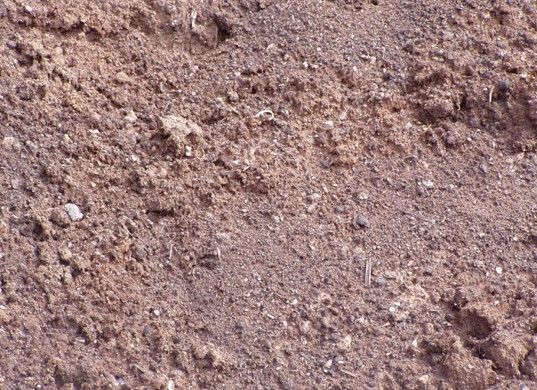
With a simple screen layout and step by step ordering process, ordering sand supplies takes less than under 2 minutes
View and compare prices from nearby Suppliers up front so you can decide what’s best for you – distance, price or material quality
We embody precision. Our drivers have all the information they need to provide a top delivery service, and you get three delivery options
Mulch acts as a natural weed barrier, effectively preventing those pesky intruders from invading your garden. With mulch, you’ll spend less time weeding and more time enjoying the beauty of your garden.
By helping your soil retain moisture, mulch reduces the need for frequent watering, ensuring your plants stay healthy and hydrated. Your plants will thank you for the consistent hydration they receive.
Regardless of whether it’s scorching hot or chilly outside, mulch plays a vital role in keeping your soil temperature stable. This means that your plants won’t have to endure extreme temperature fluctuations, allowing them to thrive in a more stable environment.
As mulch gradually breaks down over time, it enriches the soil with essential nutrients. Think of it as a slow-release fertilizer for your garden, providing vital nourishment for your plants and contributing to their overall health and vitality.
In addition to its functional benefits, mulch also adds a polished, finished look to your garden beds, enhancing the overall aesthetic appeal of your outdoor space. It’s like the icing on the cake, adding that extra touch of beauty to your garden.
Applying mulch is a breeze and can totally revamp your garden. Check out these simple steps for a garden makeover:
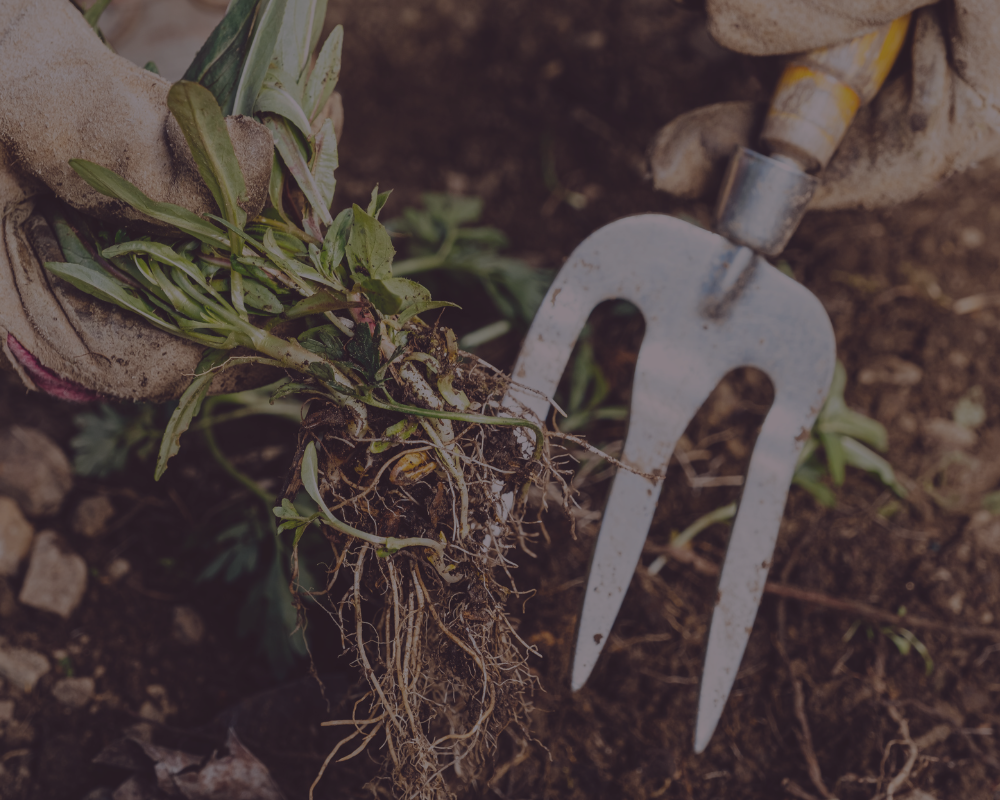
Start by getting rid of any pesky weeds or debris from the spot where you want to put the mulch.
This step is key because it gives you a clean slate and stops those annoying weeds from stealing nutrients and taking over your plants' space.
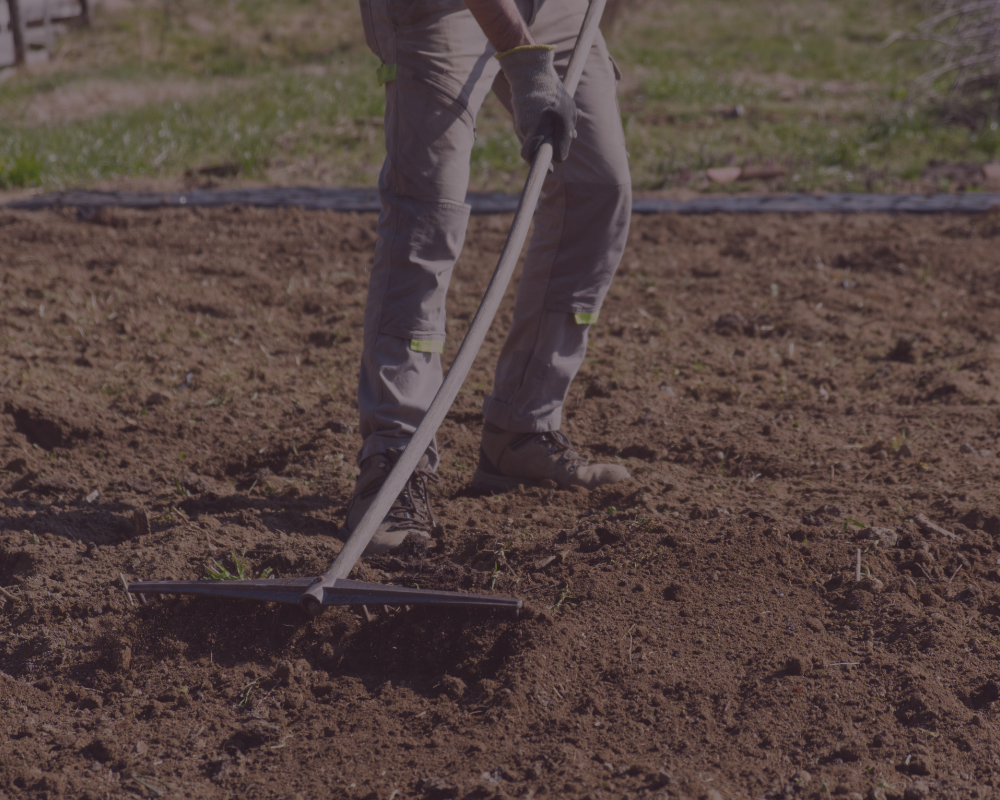
Loosen up the soil using a garden fork or tiller. Break up any hard or compacted areas and make the soil nice and crumbly. Also, don't forget to give it a good watering a day or two before mulching. This helps the soil soak up the mulch and keeps it moist for healthier root growth.
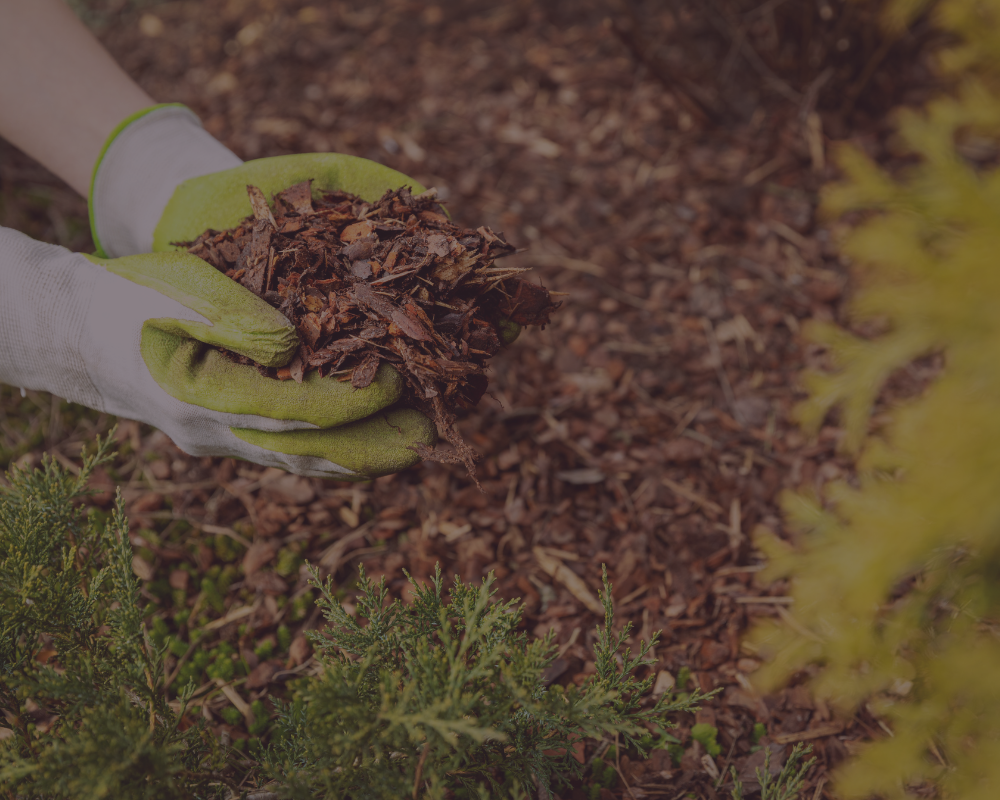
Spread a nice, even layer of mulch about 2-3 inches thick across your garden bed. Grab a rake or garden shovel to spread it out, but be careful not to pile it up against tree trunks or plant stems. We don't want moisture getting trapped and causing harm to your plants. By spreading the mulch evenly, you create a protective layer that stops weeds, keeps the soil moist, and maintains temperature.
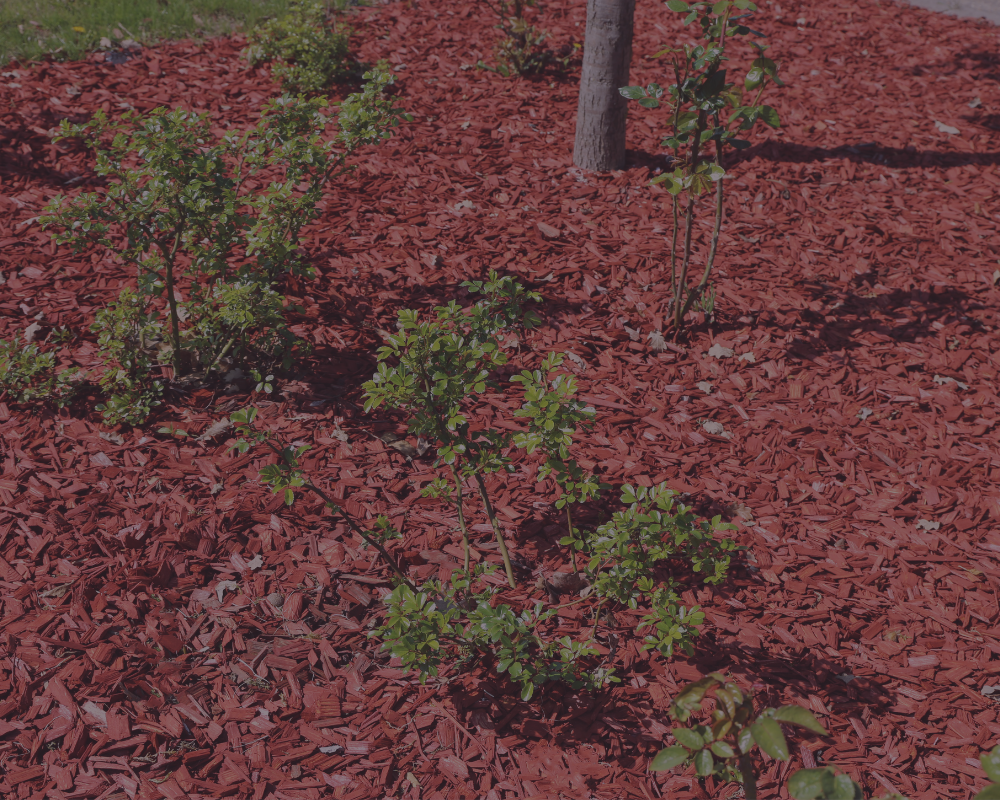
Over time, mulch breaks down naturally. So, it's important to keep an eye on it and add more as needed, usually once or twice a year. This helps to keep the benefits of mulching going strong, like keeping weeds at bay, holding in moisture, and moderating the temperature.
Plus, it keeps your garden looking fresh and well-nourished.
Yes, using compost and mulch together can be an effective strategy in the garden. Applying a layer of compost to the soil first helps build a healthy foundation by improving soil structure, fertility and nutrient levels. Then placing a 2 to 4 inch layer of mulch on top offers protection from weeds, moderates soil temperatures and helps retain moisture in the amended soil.
The compost works slowly over time to condition the soil as plant roots grow through it. The mulch acts as a protective barrier at the surface, shielding the compost and soil from the elements. Together this one-two punch of compost and mulch can give plants a major boost while reducing maintenance needs.
However, thick layers of mulch should be avoided, particularly right next to plant stems. Excessive mulch that is mounded up can retain too much moisture and lead to issues like root rot. It is best to pull mulch away from the base of plants to create a donut shape, ensuring compost and soil are still exposed around plant roots. With a balanced compost-mulch system, gardeners can enjoy the benefits of improved soil health and low-effort landscaping for years to come.
The cost of mulch can vary depending on factors such as the type and quantity you require. On average, you can expect to pay anywhere from $35 to $135 per cubic metre. For precise pricing based on your specific requirements, it’s best to download RUBBL and compare prices from Mulch Suppliers.
The process of getting mulch delivered to your project site involves careful consideration of various factors, including your delivery preferences and requirements.
RUBBL is your go-to mulch delivery partner. With three effective delivery options to suit all your landscaping needs, vehicle tracking, paperless invoicing, ordering, and receiving gravel is a breeze!
There are other considerations to consider when ordering mulch, and RUBBL has them all covered. Factors such as site access, timing, and site preparation should be taken into account to prevent delays and complications. With the RUBBL App, you can specify all this information with ease, making your delivery incredibly simple and hassle-free.
For hardwood mulches composed of chipped wood, an annual replacement is generally recommended. Over time, hardwood mulch breaks down and compacts leaving gaps between pieces. This allows weeds to sprout through and makes it less effective as a barrier.
Grass clippings and leaf litter type mulches tend to decompose more quickly. These organic mulches may only last through one growing season before needing replacement. However, you can supplement by adding a layer of fresh grass clippings or leaves each fall.
Pine straw and pine needle mulch, due to their slow decomposition rate, can last for several years before needing replacement. Check these mulches every 2 to 3 years and add a thin layer of fresh material if coverage has become spotty.
Replace mulch as needed based on its condition and effectiveness in your garden beds. Signs that mulch needs replacing include:
Weeds sprouting up through the mulch
Mulch is compacted, leaving large gaps between pieces
Mulch is discolored and decomposed
Plants appear stressed or wilted
When replacing mulch, try to do so in the spring or fall when plants are not actively growing. Remove old mulch and weeds from the surface, then layer on the fresh mulch. The new mulch will help conceal existing weeds and suppress new ones.
Yes, you can mix different types of mulch to create a custom blend that suits your garden's needs. Just ensure the combined layers do not exceed 3-4 inches in depth to avoid potential issues like excess moisture retention or nutrient depletion. The only downside to mixing mulch types is aesthetically it will be less consistent. Something to think about!
It's generally not recommended to mulch over the top of existing plants, as it can suffocate them and potentially lead to disease or pest infestations. Instead, carefully apply the mulch around the base of the plant, leaving some space for air circulation.
A 1 to 2 inch layer of mulch is a good rule of thumb as a starting point. However, the optimal depth depends on the type of mulch you use and the plants in your garden.
For hardwood and shredded bark mulches, a 2 to 3 inch layer is ideal. These bulky mulches tend to compress over time, so a thicker initial layer ensures good coverage throughout the season.
For organic mulches like straw and grass clippings, a 1 to 2 inch layer works best. Thicker layers of these lightweight mulches can mat down and prevent water and air from reaching plant roots.
Around acid-loving plants like blueberries, azaleas and rhododendrons, use pine needle or pine bark mulch. For these plants, aim for a 2 to 4 inch layer. The acidic properties of the pine will help keep the soil conditions these plants prefer.
When mulching young trees and shrubs, try to maintain a 2 to 3 inch layer. Newly planted plants have less extensive root systems, so a thicker layer of mulch helps conserve moisture and regulate soil temperatures.
As always, check the specific requirements for your plants and adjust the depth of mulch accordingly. Over time you will develop a feel for what works best in your garden, allowing you to provide the benefits of mulch while avoiding potential issues. With experimentation and observation, you'll find the ideal depth of mulch for each area of your landscape.
While mulch can be beneficial for your garden, it can also attract unwanted pests if not managed properly. Here are a few things to keep in mind:
• Inspect new mulch before spreading. Make sure it is free from weed seeds, insects, and diseases that could spread to your plants.
• Some insects like millipedes, sowbugs, and snails may be present in mulch. They are generally harmless but can become a nuisance in large numbers.
• Ants and earwigs can take up residence under mulch, feeding on plant secretions and insect pests. Most are beneficial but some species can damage plants.
• Rodents like mice and voles may nest in thick layers of mulch during winter. Reduce mulch depth to 2-3 inches and create bare strips around garden edges to discourage rodents.
• Fungus gnats can breed in overly moist mulch. Allow mulch to dry out between waterings and add a thin layer of sand on top to control their numbers.
• Slugs and snails can thrive in moist mulch, feeding on plant leaves. Use physical or organic barriers like copper strips or diatomaceous earth to reduce their damage.
With good hygiene practices and regular inspection, mulch can benefit your garden for years while minimizing the potential for pests. Properly dispose of moldy or heavily infested mulch and replace it to maintain a healthy environment for your plants.
Brown mulch is often considered the most natural looking option for gardens. However, other mulch colors like black, red and dyed white can work well depending on your plant selection and aesthetic preferences.
When choosing a mulch color, consider:
• The existing colors in your garden like plant foliage and flowers. Brown mulch tends to blend in best with most plants while brighter colors like red may stand out more.
• The amount of sunlight in the area. Lighter colored mulches like white or tan will help reflect heat and light in sunny spots while darker mulches absorb more solar radiation.
• The style you want to achieve. Formal gardens often use stricter color palettes with mulches like black or gray. More naturalistic designs blend in browns and woodchip mulches.
• The durability and longevity of the mulch. Dyed mulches tend wear off more quickly and fade over time compared to natural brown wood mulch.
• Personal taste. Ultimately, the color you choose should reflect your style and preferences. Consider samples of different mulch colors in your garden for a few weeks before making a final decision.
In general, most mulch colors can work well when selected thoughtfully and paired with complementary plants and hardscape materials. The key is choosing a color that enhances your garden's aesthetic while providing the functional benefits of mulch.
RUBBL is a marketplace and delivery platform, making it your ultimate mulch supplier! With RUBBL you can compare prices from multiple mulch suppliers, easily order in less than 2 minutes, and track your deliveries. RUBBL does all the hard work for you by presenting to you customised offers and you simply choose your favourite mulch supplier. Our trusty drivers will deliver mulch to you pronto! Download the App and start ordering mulch today!
Forest mulch is also very cost-effective in Australia due to the abundance of suitable material from native forests and tree plantations. Australia has vast expanses of eucalyptus forests that are well-suited for wood mulch production. Eucalyptus trees grow quickly and their hard wood makes durable mulch.
When forest areas are cleared for development, agriculture or fire prevention, much of the woody debris is chipped into mulch rather than hauled away. This provides a source of inexpensive mulch for homeowners and landscapers.
Yes, you can use compost as a mulch. Compost makes an excellent mulch option for the following reasons:
• Compost is a natural, organic material that enriches and nourishes the soil as it breaks down. The nutrients in compost are released slowly over time and absorbed by plant roots. This can boost plant growth and productivity.
• The organic matter in compost helps to retain moisture in the soil. This keeps soil from drying out too quickly, reducing the need for frequent watering.
• Compost serves as a natural weed barrier by blocking weed seeds from sunlight needed for germination. It also makes it more difficult for existing weeds to spread.
• Compost helps to maintain stable soil temperatures. It insulates the soil from extreme heat and cold, moderating temperature fluctuations that can stress plants.
• Applying a 2-4 inch layer of compost as mulch is a simple, effective way to improve your soil and boost the health of plants and lawn. As the compost breaks down, it becomes part of the soil itself.
The main considerations for using compost as mulch are ensuring you have high-quality compost without weed seeds, and supplementing it with additional nitrogen fertilizer for plants with high nutrient demands. Well-made compost from vegetable scraps, garden waste or leaf mold generally works best as mulch.




RUBBL enables the ordering of your bulk materials to be efficient & effortless by digitizing the entire process. The App connects Building Contractors, Suppliers and Transporters to create a reliable and rapid way to receive your sand, stone, gravel and mulch.
Servicing the Greater Newcastle Region